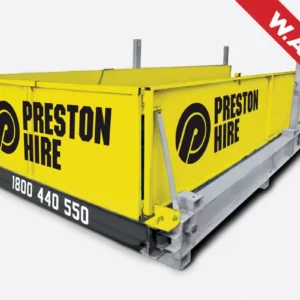In the past, users of a digital signage system had to visit each sign to add content or change information physically. Then, they would attach a keyboard, storage device, or USB drive and stand for half an hour or more to transfer content.
The process was very time-consuming and labor-intensive. Today, digital signage software provides a more efficient way of transferring content. So don’t be afraid of using digital signage and be creative with it. Check out these digital signage examples and see if you can find an inspiration for your next signage.
Content management system (CMS)
Digital signage is becoming increasingly popular as a display medium for information and advertising. However, regardless of the type of digital signage your company uses, a content management system is an essential tool. These systems make updating and managing your content easy and allow you to update your content from anywhere.
The best digital signage software – AtmosphereTV, is a web application that manages the content displayed on digital signage. This software will allow you to create and schedule content and manage your digital signage network. It can be accessed via a web browser, installed on a computer, or used as a cloud-based application. After installing and setting up the system, you can access your dashboard and manage your digital signage.
A CMS platform will give you access to various tools, including file upload capability and storage for images and videos. Some will also come with a content authoring tool, allowing you to create media from scratch or use preloaded templates. These tools may be included as part of the CMS or sold separately.
Content delivery network (DMR)
Content delivery network (DMR) for digital signs is a service that allows businesses to deliver content to their digital signage. This network enables the delivery of content through a wireless connection to client devices. Computers and television set-top boxes are examples of general-purpose computing hardware that can be used as client devices. Additionally, they could be portable electronics like cell phones and e-readers. In addition, the content can be for various purposes, such as advertising, marketing, and corporate messaging.
In addition to delivering content, DMR solutions also include features to measure content consumption. Typically, DMR devices include a feature called usage reporting that accounts for content usage in a retail environment. For example, usage reports may include information such as the titles of content distribution and the number of times a specific individual accessed each title.
Content delivery networks can be powerful tools in the digital signage industry. For example, DMRs can be used to record counseling sessions. In counseling centers, DMRs can be connected to USB jacks on wall plates. The doctor plugs in the portable identification key in the counseling room, and the DMR automatically uploads content.
Content vetting
Content vetting is a crucial feature of any digital signage management toolkit. This process ensures that the content you put on your digital signs is appropriate for your audience and will not damage your brand’s or your client’s reputation. Ideally, you will be able to control who can upload content and what kind of vetting should be done to ensure that it will not harm your brand. However, some risks include allowing inappropriate content to appear on your signage. For instance, some content might not fit your organization’s mission and may give confusing information.
In addition to content vetting, it’s important to consider the ad server you’ll use. Ad servers should handle a range of sizes and types, including open exchange and proprietary marketplaces. They should also scale across a network of screens.
Emergency messaging
Emergency messaging is important in keeping people informed in times of crisis. Digital signage solutions are cloud-based, allowing operators to change messages (see how WebRTC works) from any internet-enabled device. They also ensure authorized personnel can access emergency messages.
When it comes to emergency message broadcasting, the first step is to decide how you’d like your messages to be delivered. The message should be short and stand out from normal digital signage. In addition, emergency messages should be part of a comprehensive communication plan to reach as many people as possible. This plan should include integrating digital signage with all available devices to ensure the most effective distribution of emergency information.
Once you’ve decided on a messaging strategy, it’s time to look at each product’s features and capabilities. For example, some apps allow you to display emergency messages in various languages. This feature is especially helpful for bilingual students who speak English as a second language. Additionally, these solutions include templates that can be used to create a checklist of things to do in an emergency. You’ll also want to consider training several employees to operate the system and have regular meetings to check your preparedness program.





